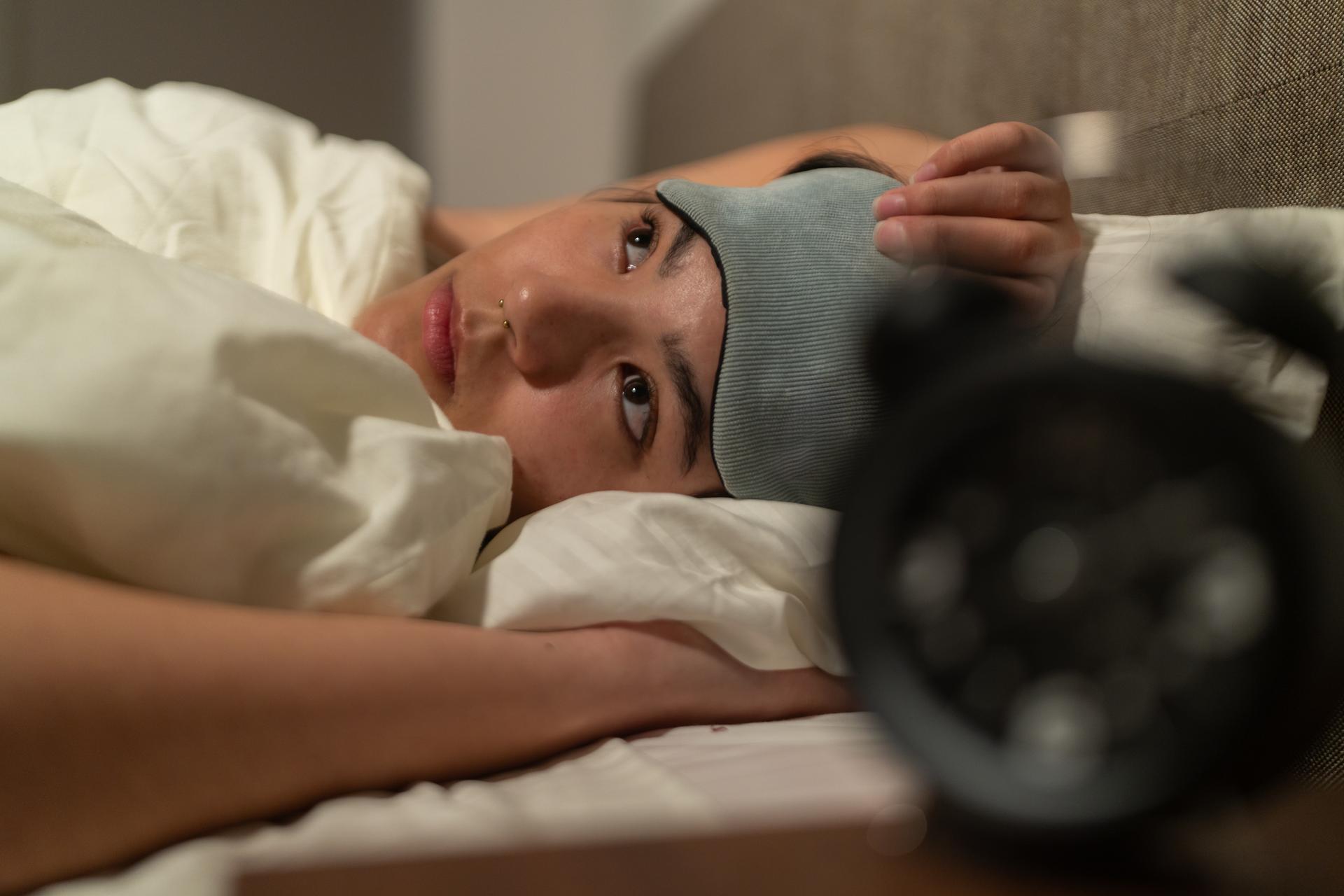Can’t Fall Asleep? Here’s How to Soothe Your Mind and Body

You’ve done everything you’re supposed to, including going to bed at a reasonable time and trying to relax. But your mind keeps spinning, and sleep won’t come.
This kind of night can feel endless. You check the clock, shift positions, and start worrying about how tired you’ll be the next day. The longer it lasts, the more pressure builds.
At Happio, we take a different approach. Instead of trying to force sleep, we guide you in creating the right internal and external environment for it to return, using proven psychological techniques and calming in-app tools.
Let’s explore how to approach sleeplessness in a therapeutic, compassionate, and sustainable way.
1. Let go of the pressure to sleep
One of the most disruptive thoughts we have at night is:
“I should be asleep by now.”>
This idea activates the stress response, increasing cortisol and keeping your body alert, precisely the opposite of what sleep needs. In therapy, we call this performance anxiety. The more pressure you place on sleep, the harder it is to access.
Instead, shift your focus:
“My job isn’t to fall asleep. My job is to rest. Sleep will come when it’s ready.”>
This simple mental reframe helps the nervous system transition into a more restful state, thereby reducing hyperarousal. Use Happio to support this:
Open your evening journal and complete one calming prompt. Even a few sentences can settle the inner noise and signal to your mind: it’s safe to let go.
2. Understand why your mind stays active
Struggling to fall asleep isn’t just about bedtime; it’s often about what happened earlier in the day. Stress, emotional overload, and overstimulation can all prevent your brain from switching off at night. Therapeutically speaking, sleep is the body’s way of saying, “I feel safe enough to let go.” So when you’re stuck awake, it helps to ask gently:
What’s still unresolved from today?>
What am I holding onto that I haven’t acknowledged?>
These aren’t questions to answer with logic. They’re invitations to process.
Try free-flow journaling, based on Pennebaker’s theory of expressive writing: **Just write whatever comes out, uncensored, for 5–10 minutes. ** You might begin with:
“Right now, I can’t sleep because…”
Research shows that this writing reduces stress and improves sleep by giving the brain a safe place to “put down” its worries. You’ll find this inside Happio’s 4-week Fatigue Plan and evening check-in tools.
3. Support the transition from alert to rest
Sleep doesn’t just happen. It’s a descent, from stimulation to stillness. If your body hasn’t begun that descent, you’ll stay in what therapists call an “activated state.”
To help your system wind down, try:
- Guided visualisation – like Happio’s Castle in Scotland, which promotes emotional safety and mental imagery known to aid sleep
- Delta wave frequencies – slow brainwave patterns that encourage deep rest
- Tropical rain sounds – a consistent, predictable sound helps regulate heart rate and breathing.
These tools gently encourage the nervous system to transition toward sleep readiness. They are not distractions; they are sensory cues that promote regulation.
Find all of these in the Happio Self-Care Hub, available at any time of night.
4. Be mindful of blue light, and reset gently if needed
If sleep still hasn’t come after 20–30 minutes, it’s okay to get out of bed briefly. This is part of CBT-I (Cognitive Behavioural Therapy for Insomnia), a proven method that teaches your brain not to associate bed with frustration.
But here’s the key: avoid over-stimulating your senses.
If you use your phone, make sure you:
- Enable night mode or warm light filters
- Lower screen brightness
- Use blue light-blocking glasses if possible.
Blue light disrupts melatonin production, the hormone that promotes sleep, so the goal is to minimise exposure and maintain a dark, restful environment.
Instead of scrolling, try:
- Listening to a slow-paced audiobook
- Writing a few lines in your Happio journal
- Replaying a sound loop from the Self-Care Hub to soothe your body back to rest
This helps the brain gently reassociate rest with safety and calm, rather than stimulation and stress.
5. Build better rhythms throughout your day
Therapists often say that sleep is built during the day. If your daytime is full of emotional pressure, reactivity, or constant stimulation, your brain may be unable to switch off easily at night.
That’s why Happio’s 4-week Fatigue Plan looks beyond the bedtime routine. It helps you:
- Understand your emotional and physical fatigue triggers
- Reflect on your mood and energy patterns.
- Develop a calming, consistent evening routine that helps your body feel secure.
This isn’t just about sleep hygiene. It’s about building a healthier emotional baseline, which, over time, becomes the foundation for easier, deeper rest.
Final thought
It doesn’t mean something’s wrong with you if you're lying awake at night. It means your body and mind are still working through the day.
Rather than fighting sleep, try softening into the moment. You don’t need to do more; you need to do less, but with care, curiosity, and structure.
With the proper support, you can move from restlessness to rest. Happio is here to help you do so.
Struggling to switch off at night? Start Happio’s 4-week Fatigue Plan and access:
✔ Calming visualisations ✔ Delta wave soundscapes ✔ Nightly journaling tools ✔ Practical guidance from CBT-based methods ✔ Gain emotional insight into what’s keeping you up by using the Fatigue Plan with your AI Sleep Coach
Rebuild your sleep rhythm, with structure, not pressure.